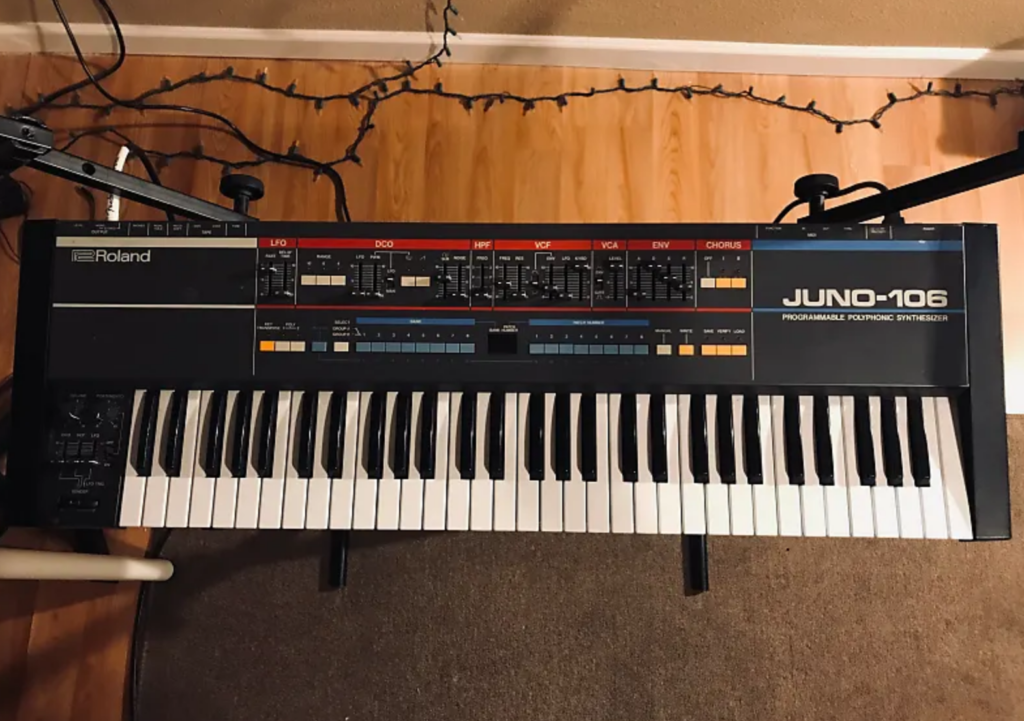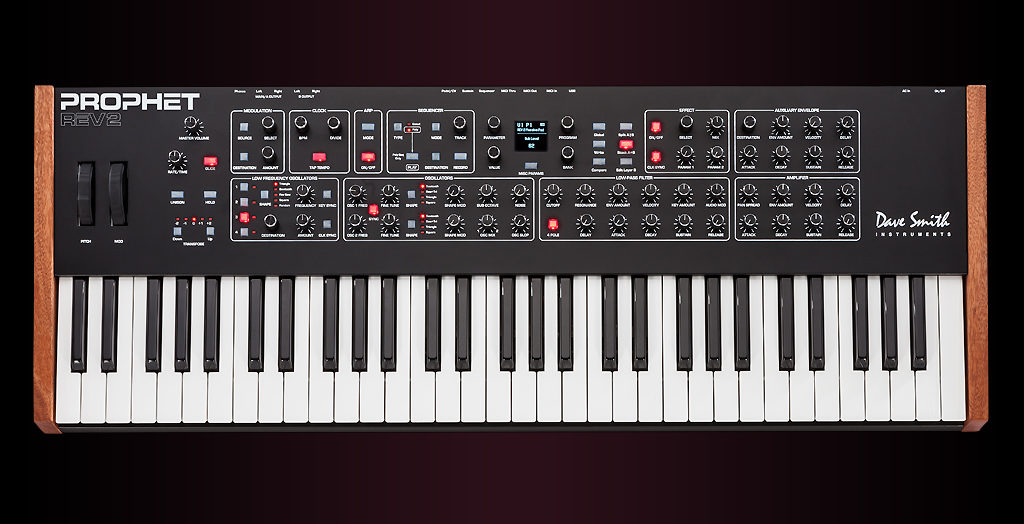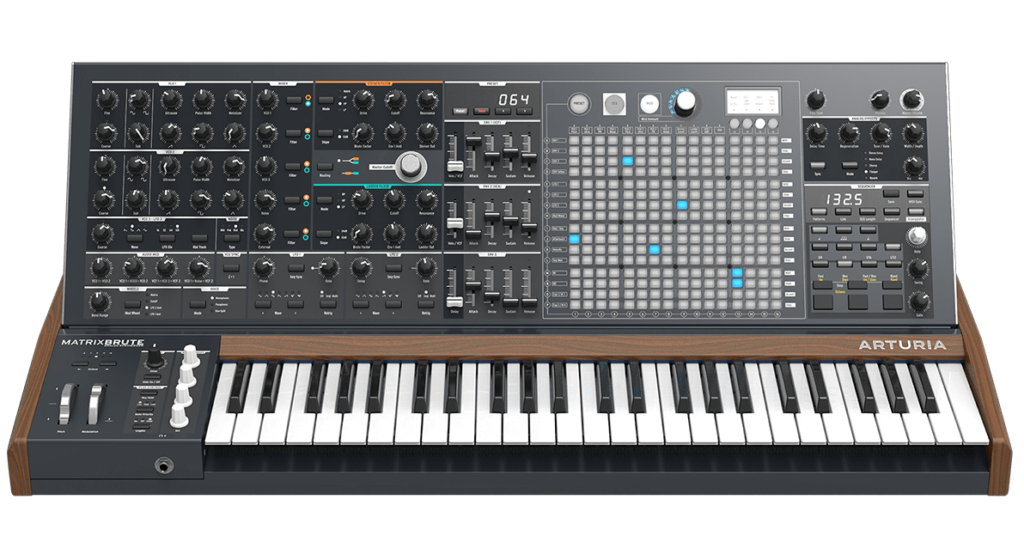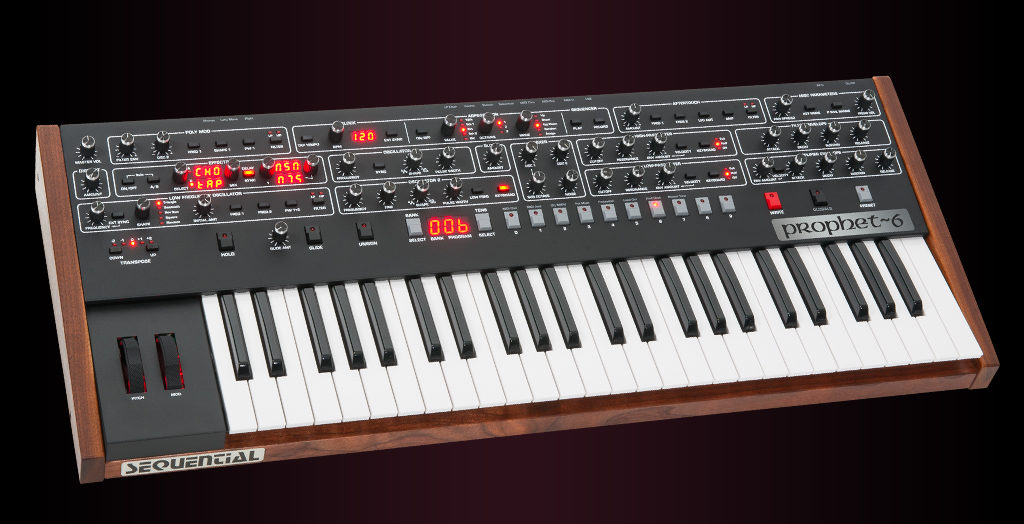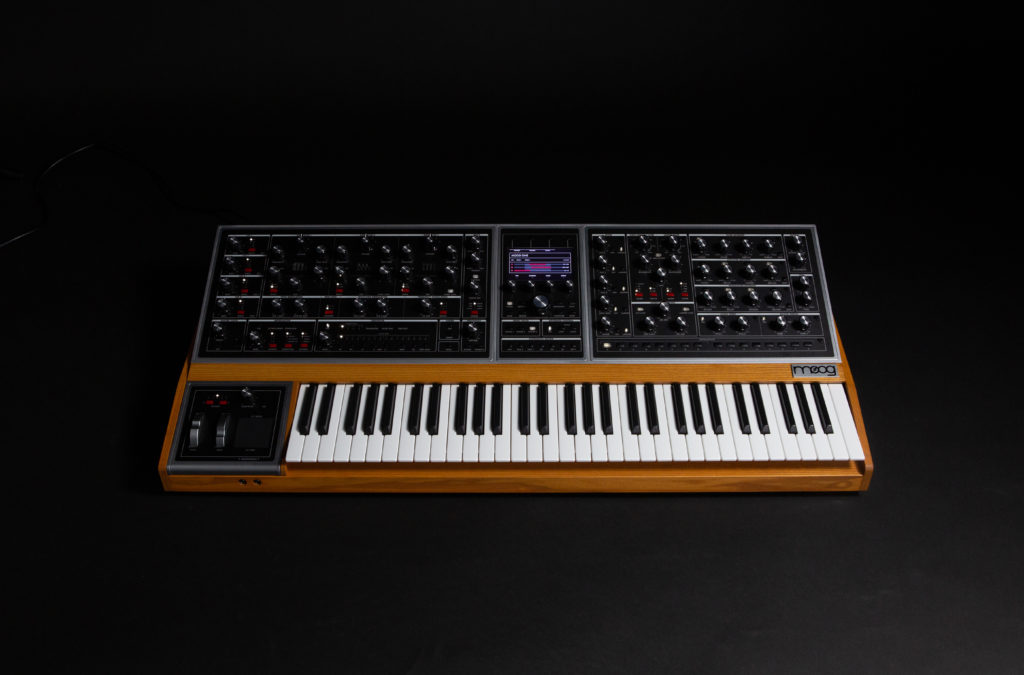6 of the Best Analog Synths On The Market Today
I recently wrote a post that covered some of the best analog synthesizers under $1,000. While the list included many excellent choices given a smaller budget, this time we are going to explore the kind of synthesis power top dollar can buy you in 2019. Set your expectations high because the synths on this list are absolute workhorses.
The reality is that to get your hands on a truly powerful analog synthesizer, you’re going to have to spend a little bit of dough. The more components you pack into a piece of hardware, the more expensive it’s going to be.
Analog synths under $1,000 tend to provide capabilities in moderation and are generally missing features that many people have grown accustomed to using soft synths. It’s only the top-of-the-line analog synths that can marry the flexibility of digital with the allure of real analog tone generation.
There are countless amazing synths that have been made throughout history, but that’s not our focus today. For this roundup, we are going to be looking at more recent analog synths that can be bought new, or can easily be found in good working condition. All but one of them are still being made today. So let’s get to it and have a look at some of the very best options out there on the market right now.
Roland Juno-106 ($900-$1,500+)
We’ll start off with the only synth to make this list that is no longer in production. But for a discontinued model, the Juno-106 is still easy to find, and sometimes in nearly new condition for a reasonable price.
If you’re looking for a synth that is easy to use, and produces tones from the ’80s, the Juno-106 might be what you’re looking for. It’s capable of sculpting basses, pads, and retro-sounding leads. The first time you hear this synth, you’ll instantly recognize it. Many artists have used this unit over the years including The Black Eyed Peas, Daft Punk, Moby, The Chemical Brothers, Justice, Tame Impala, and Chromeo.
Known for its simple synthesis architecture, the Juno-106 6-voice polyphonic synthesizer is a staple in the collection of many synth lovers. It features analog filters and signal path, as well as digitally controlled oscillators; which are hybrid digital/analog components used to overcome tuning instability. This synth also uses digital envelope generation.
Each of the six oscillators can produce sawtooth, square, and pulse waveforms, as well as noise. The Juno-106 has a -24 dB/octave analog low-pass filter, which you’re able to control the resonance of, and a high-pass filter that doesn’t provide resonance control. As far as effects go, there is an included chorus, but that’s all.
Unique for the time period in which it was made, the Juno-106 allows you to store 128 patches, and its MIDI abilities are equally impressive. The sliders and buttons let you transmit and receive MIDI SysEx commands. This means that you can take control of the Juno-106 using your computer, which is pretty cool considering it’s from the ’80s.
You can’t buy this synth new from any retailers as far as I know, but there are plenty of them that get traded online via eBay and sites like Reverb. You can probably expect to pay around $1,200 for a Juno-106 in good condition any day of the week, but I would consider paying closer to $1,100 a good deal. Keep in mind that replacement parts aren’t that cheap, so try to avoid buying a Juno-106 that needs repairs.
Moog Subsequent 37 ($1499)
The Moog Subsequent 37 is an absolute monster when it comes to producing basslines and leads. It really excels at creating thick, rich tones. The Subsequent 37’s Multidrive knob is the centrepiece of this unit, and as you drive the gain, you’re able to achieve increasingly dirty and aggressive sounds. The least expensive entry on this list, this synth is an upgrade from the monophonic analog synths you’ll often find at lower price points.
The Subsequent has a “two-note paraphonic” mode, meaning each of its oscillators is capable of playing a different note, while sharing the same audio path. This allows you to essentially split the keyboard in half and play two different musical parts at once. You can play a dirty bassline with your left hand while laying down a rocking lead with your right hand. It has a lot of flexibility for a compact package and allows you to create cleaner sounds with less distortion than its predecessor—the Sub 37; this can be attributed to the fact that the Subsequent 37 has twice as much headroom.
Not only can you achieve clean tones with the Subsequent 37. You can also capture dirty sounds with ample distortion as well. This is due to the design of the Ladder Filter’s gain staging, which has been optimized to provide an abundance of harmonic saturation and compression.
Much of the cleanliness/distortion that you can get out of this synth is a result of how you set the Multidrive knob, and the various controls in the Mixer section.
Dave Smith Instruments Prophet Rev2 16-Voice ($1,999)
The Prophet Rev2 is a step up from the Prophet 08, which was originally released over a decade ago as a rebirth of the iconic vintage synth of the same name. This latest version has a slick layout with clearly labeled knobs that makes using it a breeze. Dave Smith has added waveshape modulation and a polyphonic step sequencer to this iteration, allowing for up to 64 steps with 6 notes per step.
This unit’s two per-voice digitally controlled analog oscillators each allow you to select between sawtooth, sawtooth/triangle, triangle, and square waveforms. With the waveshape modulation feature, you can change the pulse width of the waveforms, opening up near endless creative doors.
The mod matrix in the Rev 2 is twice as big as the one in the 08, and there is also a multitude of onboard effects including reverb, delay, chorus, phase shift, ring mod, and distortion. The mod matrix allows you to modulate these effects’ parameters.
One of the most significant selling points of the Rev2 is in its 2/4-pole resonant lowpass Curtis filters. These filters have a unique sound that set this unit apart from the Dave Smith Instruments OB-6 and Prophet 6, which have different filters. One of the very cool features of the Rev2 is that you can download the sounds of the 08 directly into it, and they’ll play back exactly the same—a perk of having analog oscillators that are digitally controlled.
This synth comes in a couple different versions which include the Rev2-08 8-voice Synthesizer ($1,499), the Rev2 16-voice Synthesizer Module ($1,799), and the Rev2 8-voice Synthesizer Module ($1,299). The latter two of these three synths are modules, so it’s worth mentioning that they’re cheaper because they don’t include a keyboard.
Arturia MatrixBrute ($2,499)
When you combine analog synthesis with a powerful digital sequencing matrix, you get the Arturia MatrixBrute. The matrix allows you to create your own routings; this feature seeks to mimic the flexibility of a modular synth. I love patching together modular units just as much as the next guy, but the cable clutter is an absolute nightmare when you’re on the road.
The MatrixBrute is aimed at musicians who need to be portable, require the ability to set up custom routings, and also want an audio signal path that is 100% analog. There’s a reason people don’t tour with modular Eurorack gear very often. Could you imagine waiting for someone to set up a new patch between every song? It would take forever and completely kill the flow of a live show. With 256 recallable presets, the MatrixBrute provides analog tones, while offering up the flexibility of a digital synth.
There are three analog oscillators; the third being a combination VCO/LFO oscillator. There’s also a noise generator that, surprisingly, allows you to produce White, Pink, Red and Blue noise. Arturia has included an analog delay, chorus, and flanger to the output; the controls of these effects can be set as modulation destinations in the Matrix.
Another key feature includes the Steiner-Parker filter, which offers both 12dB/octave and 24dB/octave slopes, as well as a DRIVE control that will help beef up your sound. I should also mention that this synth operates in monophonic, paraphonic, and duophonic modes.
You can perform arrangements either using the 49 note keyboard, or the 64-step sequencer/arpeggiator controls. This opens up a world of composition options, and makes the MatrixBrute a great piece to integrate with your modular gear. Containing a 12-in/12-out CV section, you can create very complex signal routings if you choose to do so.
Dave Smith Instruments Sequential Prophet-6 6-Voice ($2,799)
The Sequential Prophet-6 is actually quite comparable to the more expensive OB-6, and I personally prefer the filters found in this unit. This is a step up from the Prophet-5 that was produced in the late ’70s. For starters, the Prophet-6 has six voices, whereas the Prophet-5 only had five. The Prophet-6 also contains a bank of sounds from the Prophet-5 so you won’t miss out on any of those old-school patches.
This is a two-oscillator synth, with a sub oscillator, and a noise generator. The oscillators are continuously variable, meaning that you can sweep from a triangle to a saw, to a square, to a pulse wave which you can then change the width of (varying from 0% to 100%).
There are an incredible 500 factory presets included with the Prophet-6. I love making my own patches just as much as the next synth head, but when I’m writing music, I’m looking for all the help I can get to push my ideas out fast. The assortment of presets included with the Prophet-6 are perfect for this. Additionally, you can save up to 500 of your own, user-made presets, which gives you the ability to call on those while writing music as well.
In Will Betts’ interview with Kyle Dixon and Michael Stein (the composers of the Stranger Thing’s soundtrack), Betts discovers that the two composers made great use of the Prophet-6’s ability to recall patches when scoring Stranger Things. Dixon says that “The Prophet 6 got used a lot on this score. Because it’s new, it has some handy features [such as patch recall, MIDI and remote parameter control] that the older polysynths do not.”
If you’re looking to get the sound of a Prophet-6 at a discounted price, this unit comes in the form of a module for $600 less.
Moog One 16-Voice ($7,999)
The awesome variety of sounds that the Moog One 16-Voice synthesizer is capable of producing is testament to the huge number of components inside of it. This synth is what is known as “tri-timbral”, which means it can play up to three individual synth sounds at the same time. These synths can be split, layered or zoned across the keyboard.
For each one of the 16 voices, there are three VCOs, a noise generator, an analog mixer with external audio output, four LFOs, three envelope generators and two independent analog filters, each of which include a Variable State Filter and Moog Ladder Filter, and can be run either in serial or parallel with one another. The sheer number of components required to make this all possible is what makes it such a costly device.
Each timbre has its own sequencer, arpeggiator, and onboard effects library. In addition to the Synth Effects that can be applied to the individual timbral layers, the Master Bus Effects accept sends from each of the three synths. These onboard effects include chorus, delay, phase, bit reduction, vocoding, and multiple Eventide reverbs.
You can store and recall tens of thousands of presets using the Moog One. These presets are grouped into what is known as a Moog One Performance Set, where they can be easily accessed. This is ideal for if you work with multiple different artists, and need to recall patches for various songs on their album—You can easily create a Moog One Performance Set for each group you work with.
While the Moog One comes in an 8-voice version for $2,000 less, you still end up paying $5,999. I don’t know about you, but if I have to sell my car to afford a Moog One, I’m going big and getting the version with 16 voices.
Conclusion
While it’s not possible to go into every detail of what these synths can do in an article of this length, I hope you now have a general idea of each of these synth’s strengths, and can better narrow down your choices. As you step beyond the price point of the Moog One, you start paying a premium for gear because it’s vintage, or because there’s been a limited production run; the gear itself isn’t necessarily “better” from a features perspective. When a synth is expensive, it’s not always an indication of quality; guitars are quite similar in this way.
If you’re new to synthesis and would like to learn more, make sure to check out my Beginner’s Guide to Audio Synthesis. It includes explanations of common synthesis terms and an overview of various different types of synthesis.
Charles Hoffman is a Mixing and Mastering Engineer at Black Ghost Audio. After graduating from the University of Manitoba with an English degree, Charles completed his education at Icon Collective in Los Angeles, CA.
Please note: When you buy products through links on this page, we may earn an affiliate commission.







